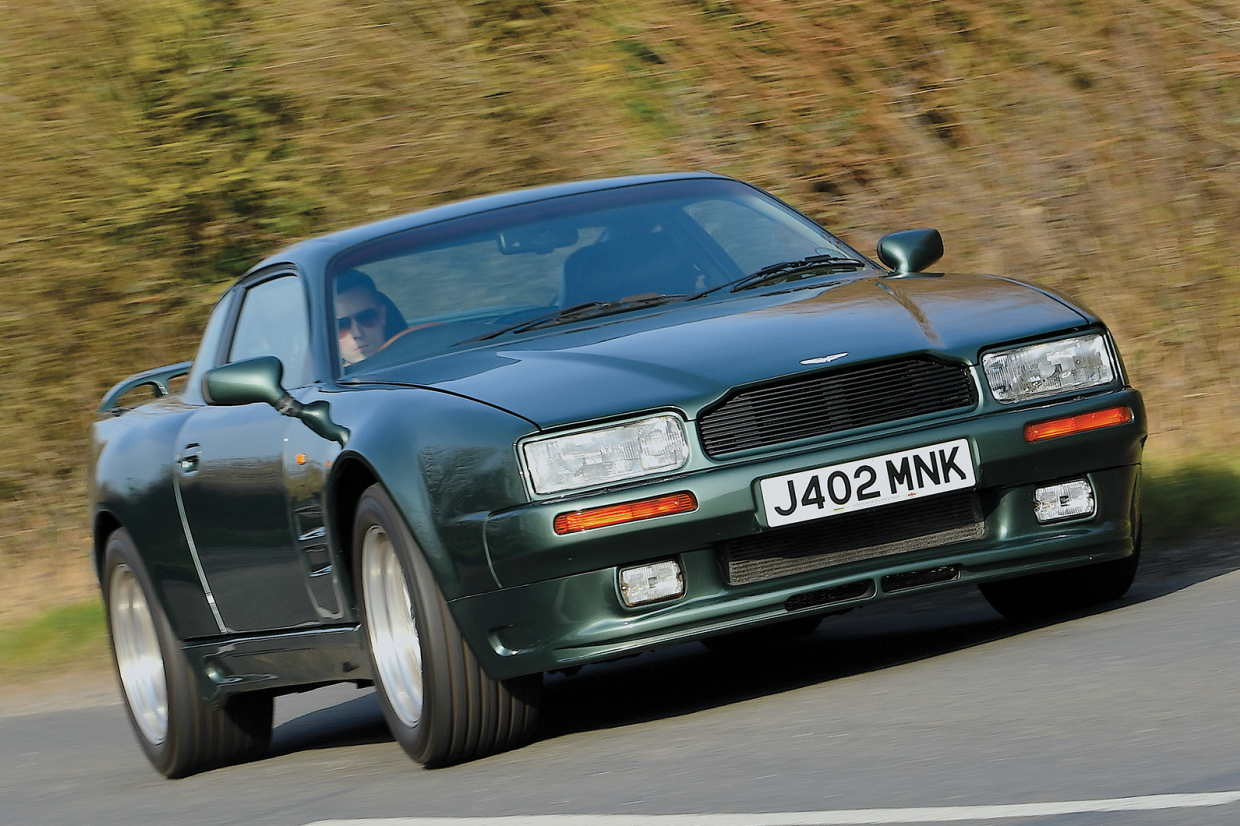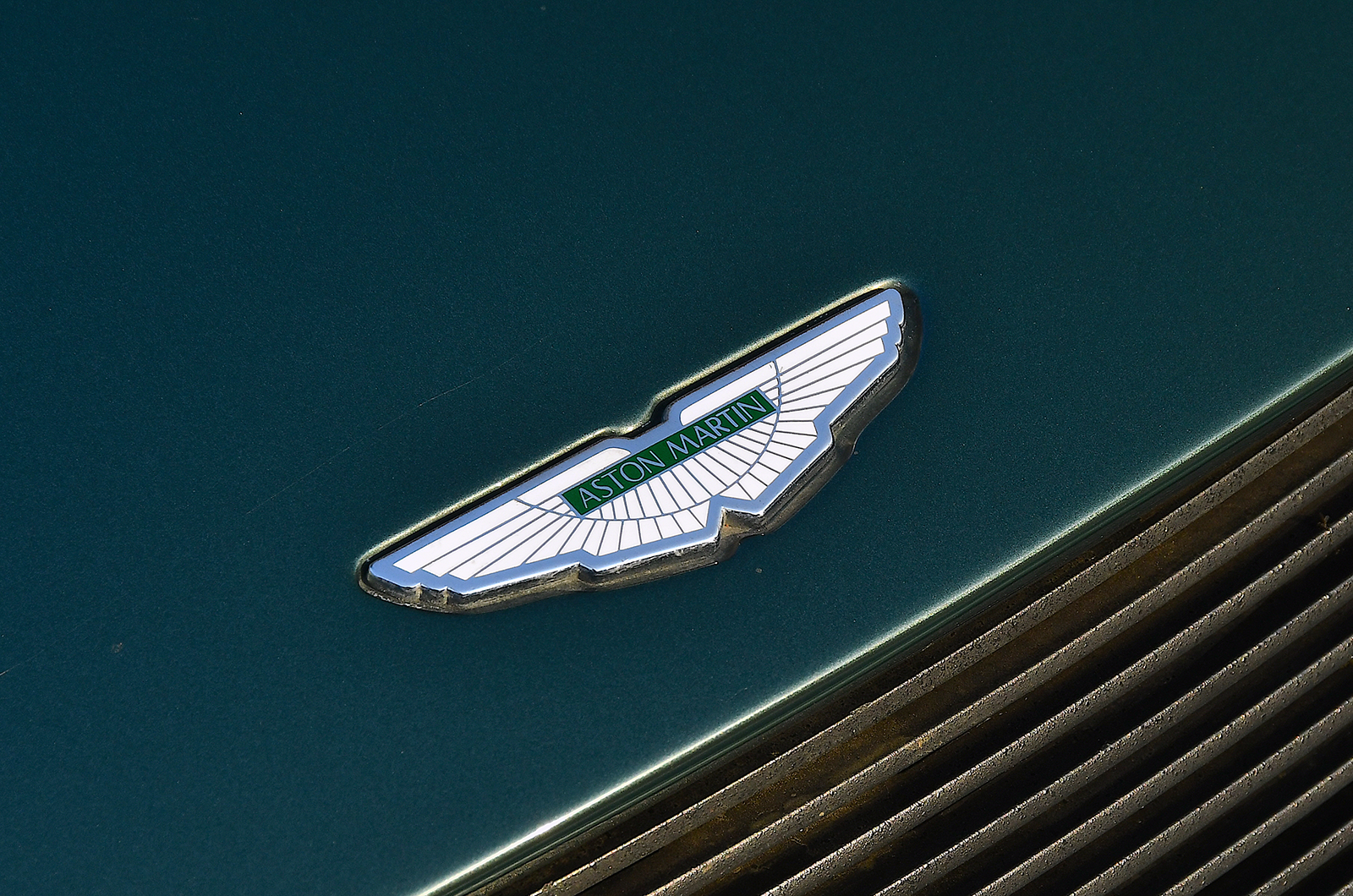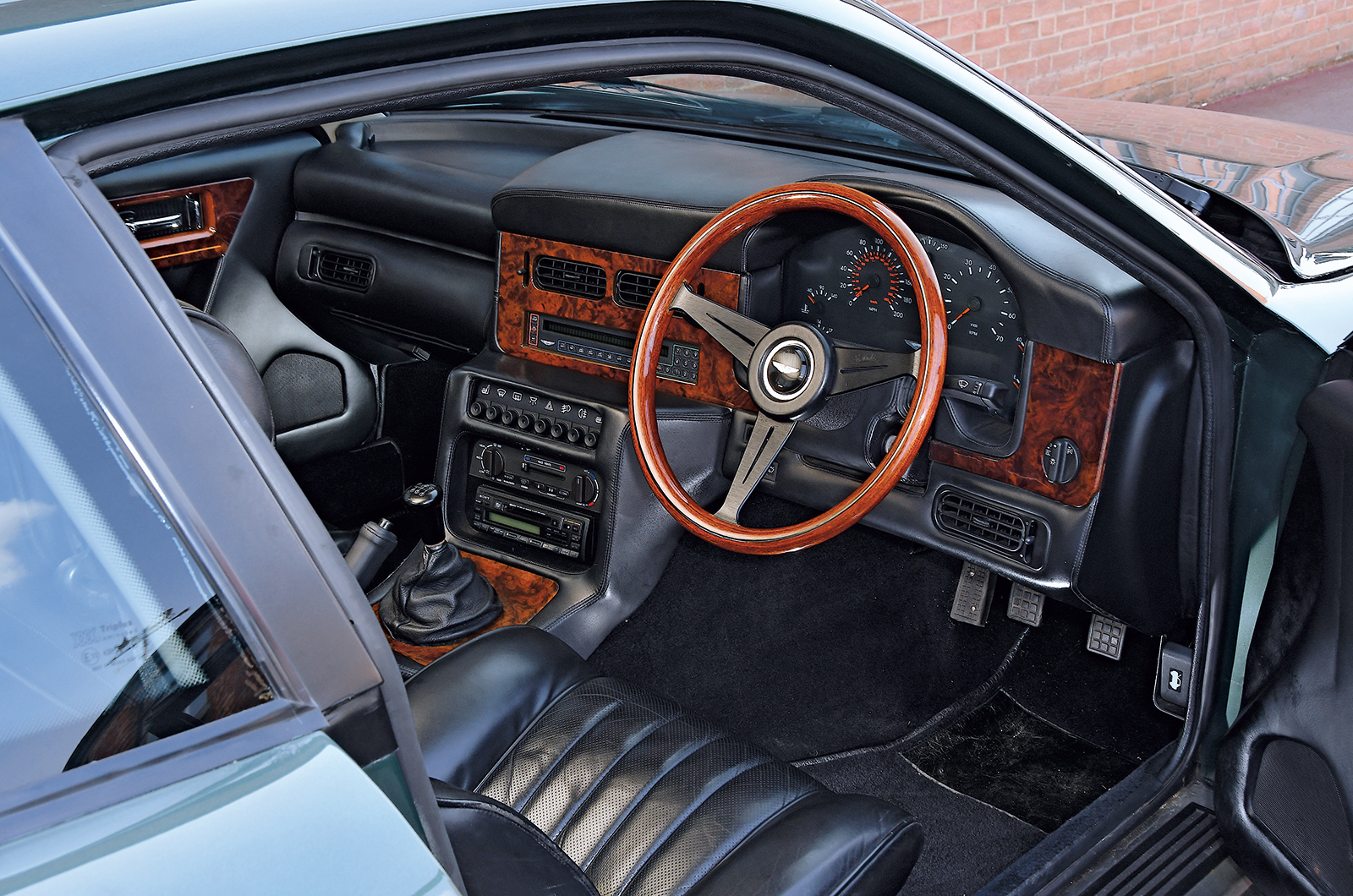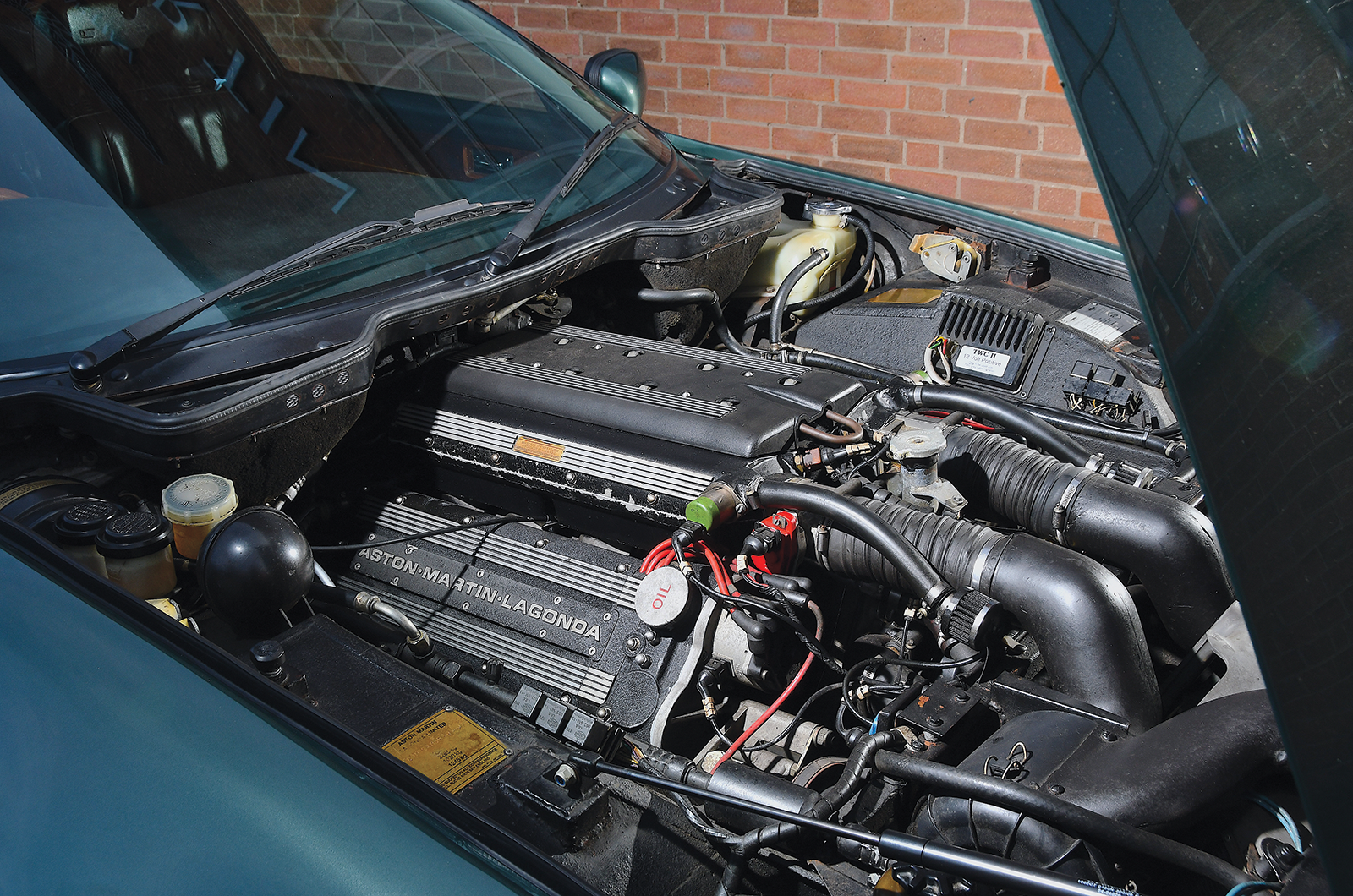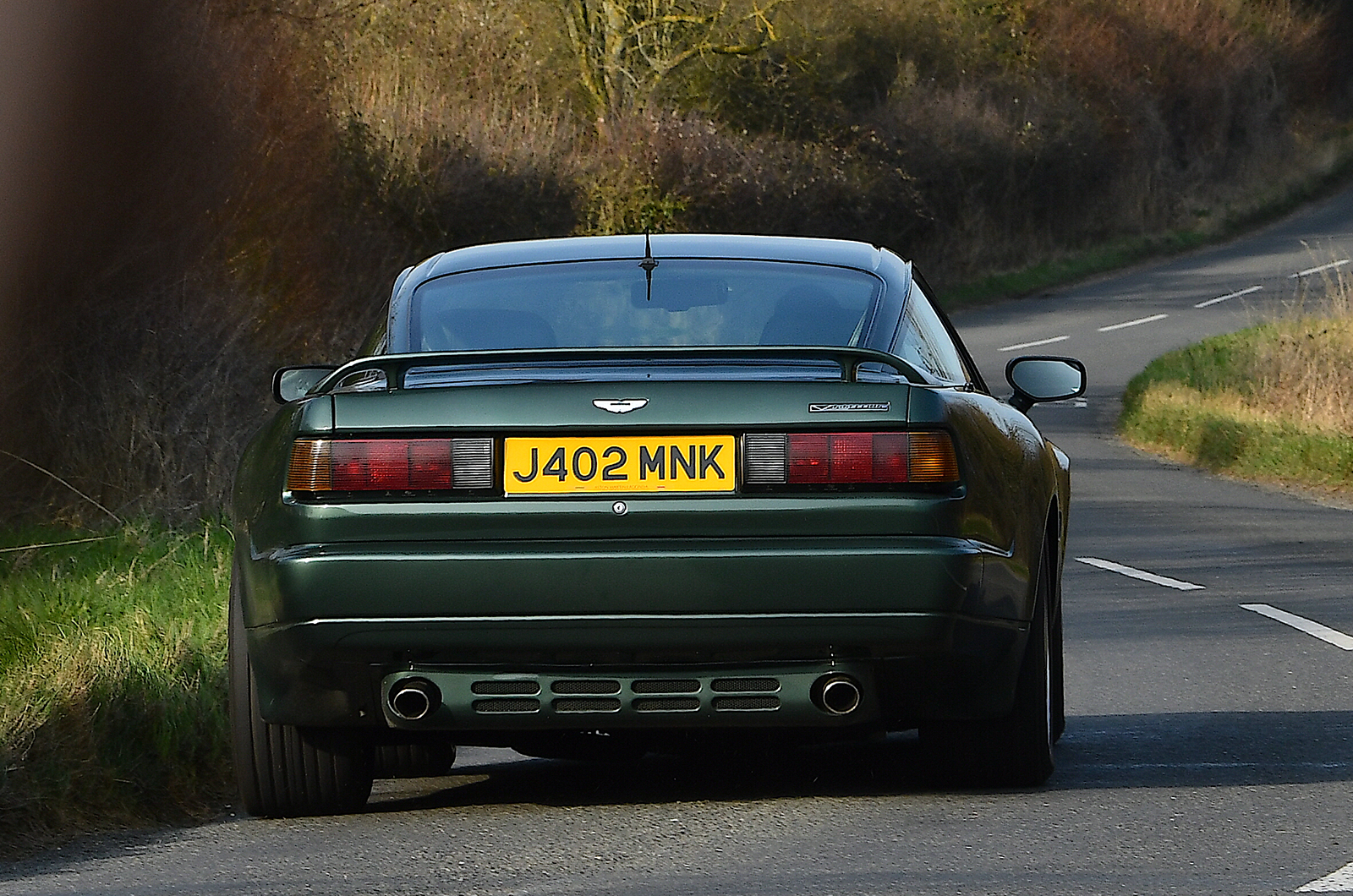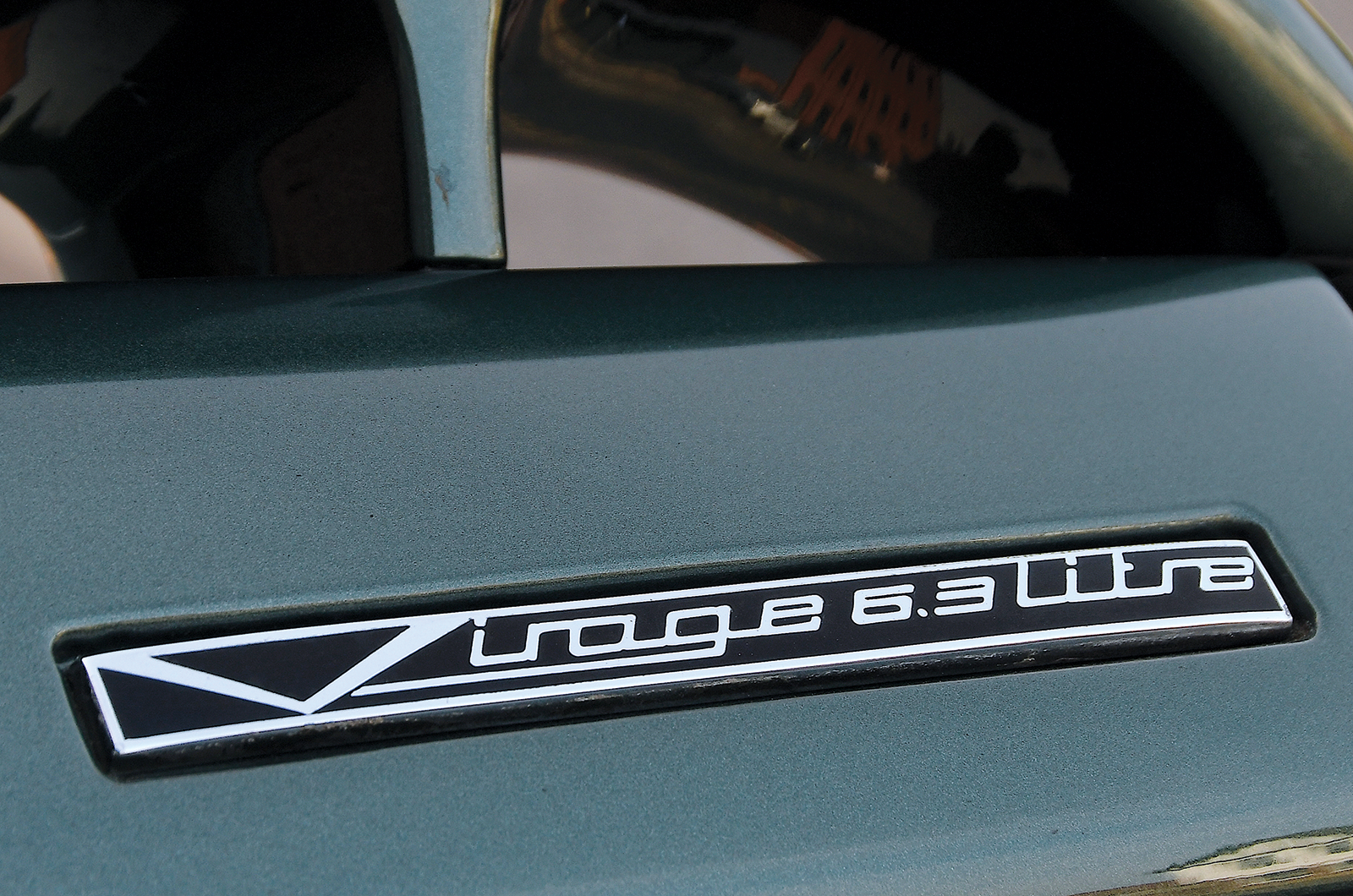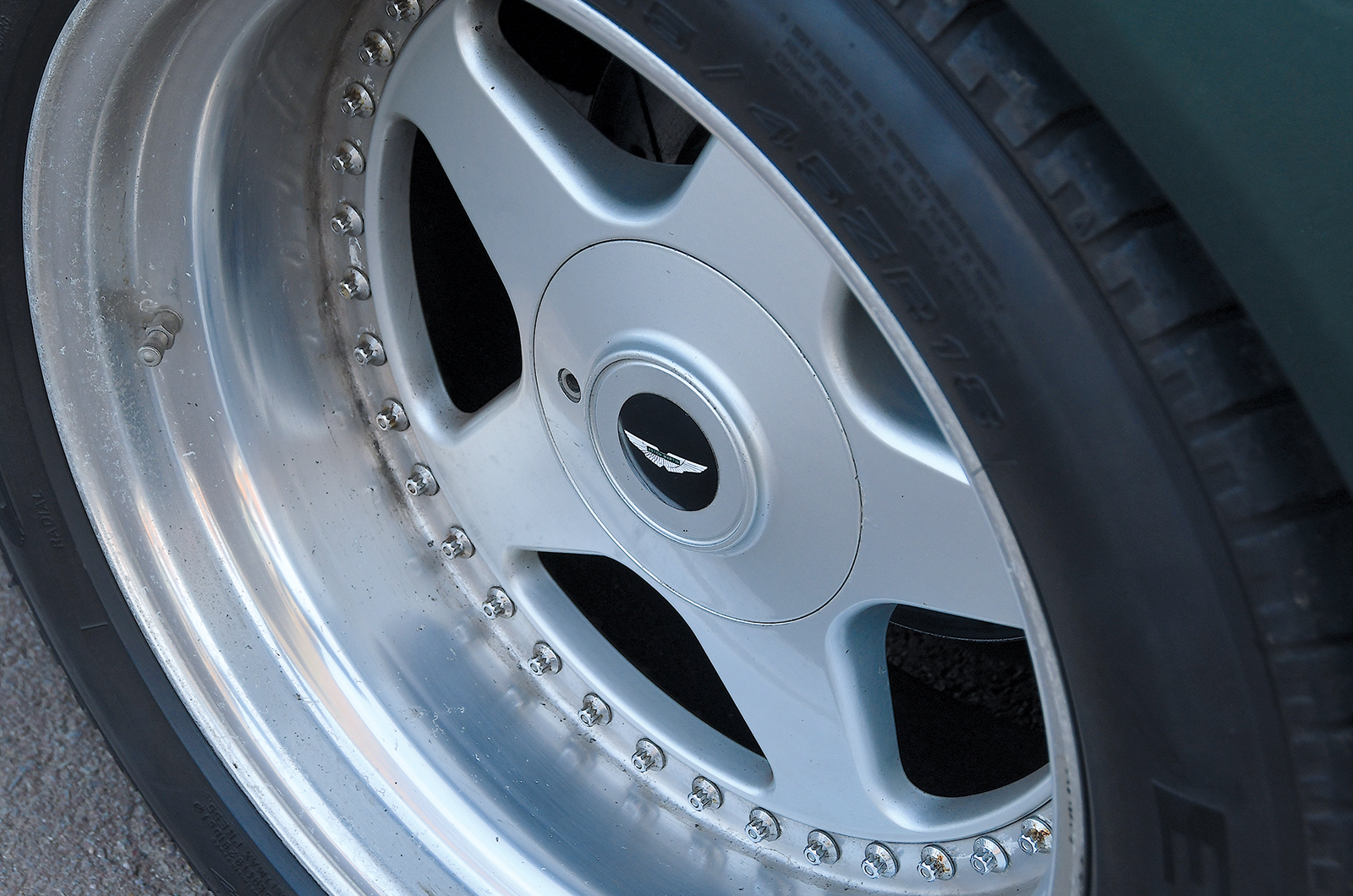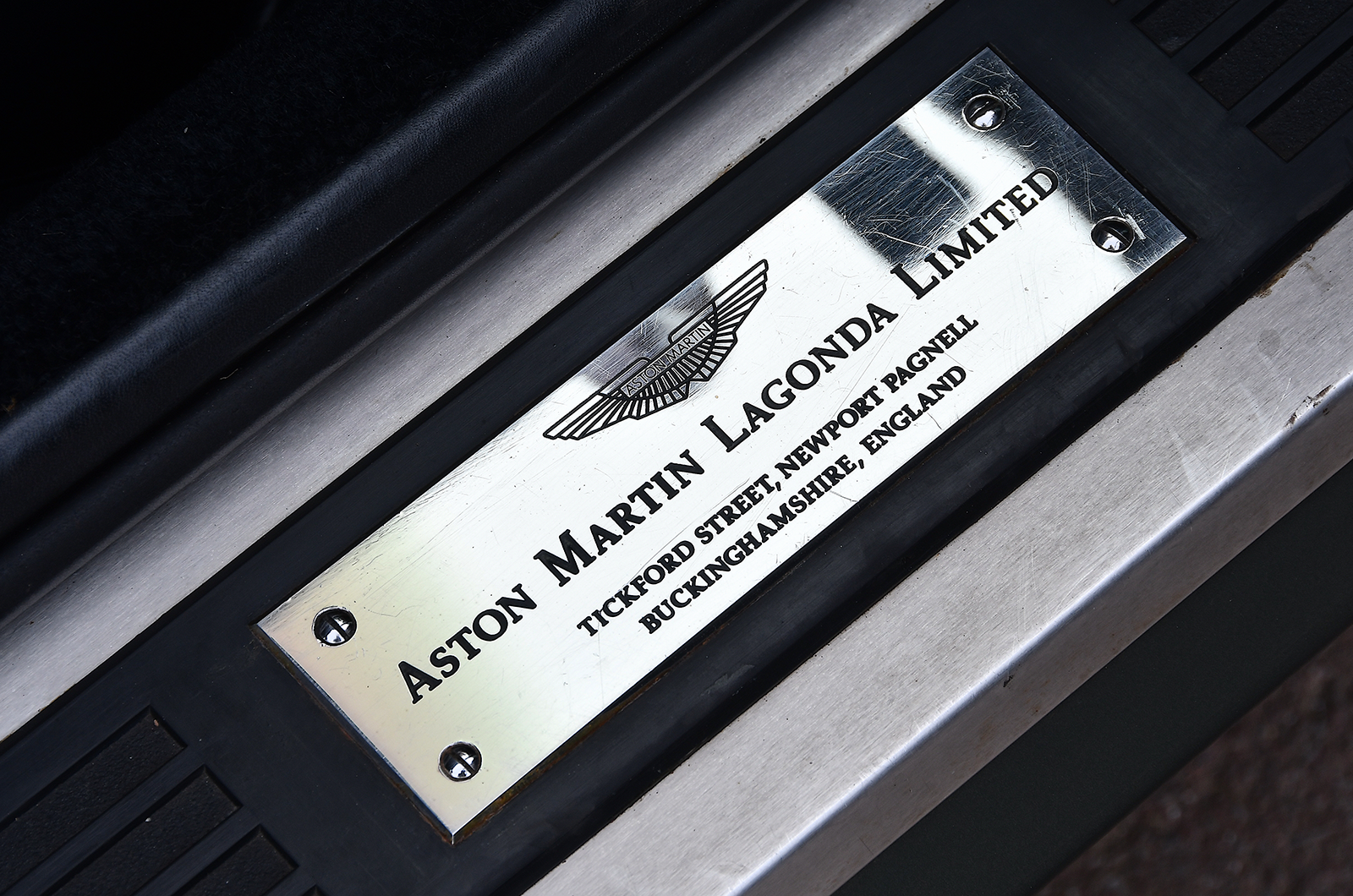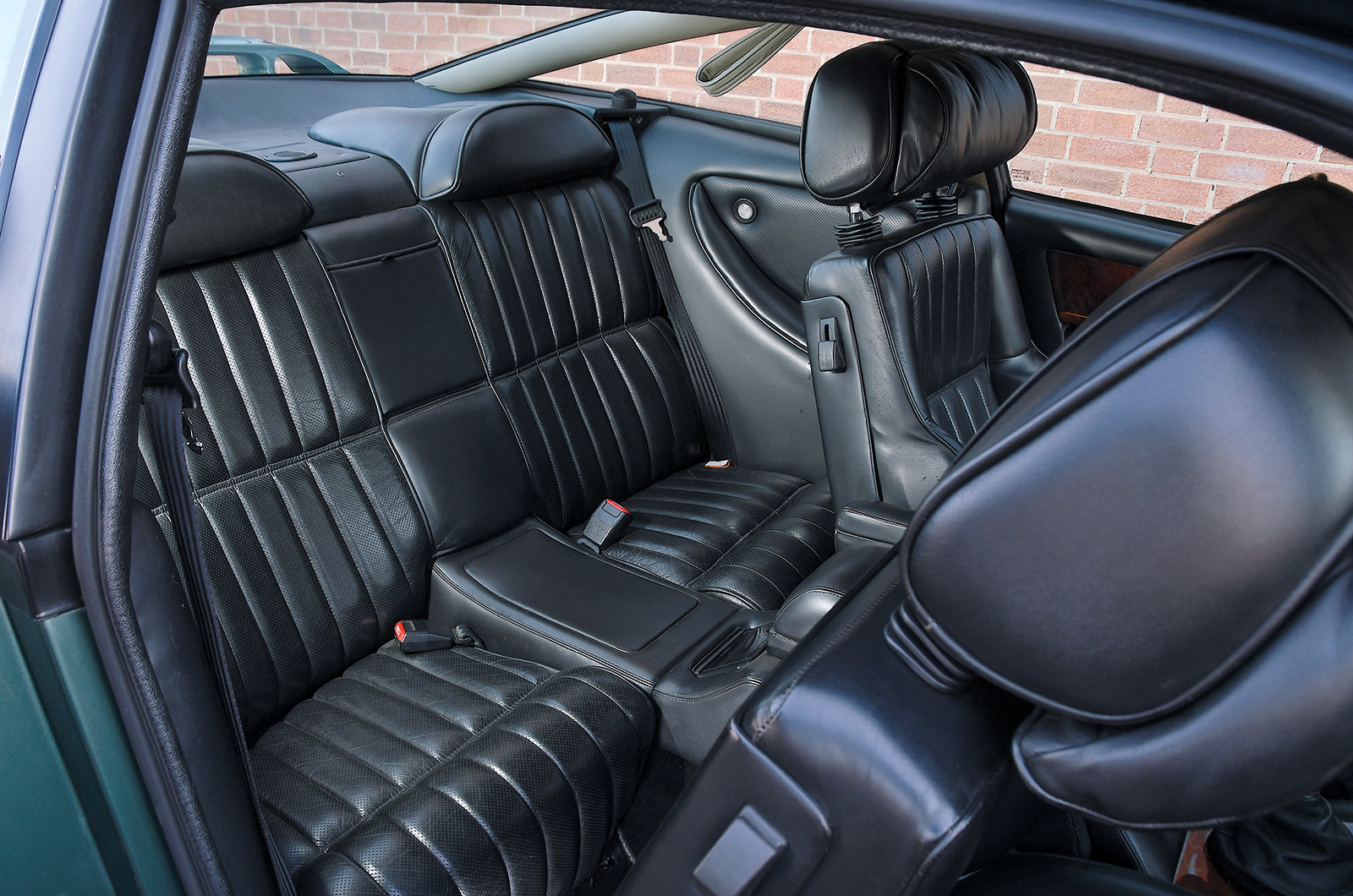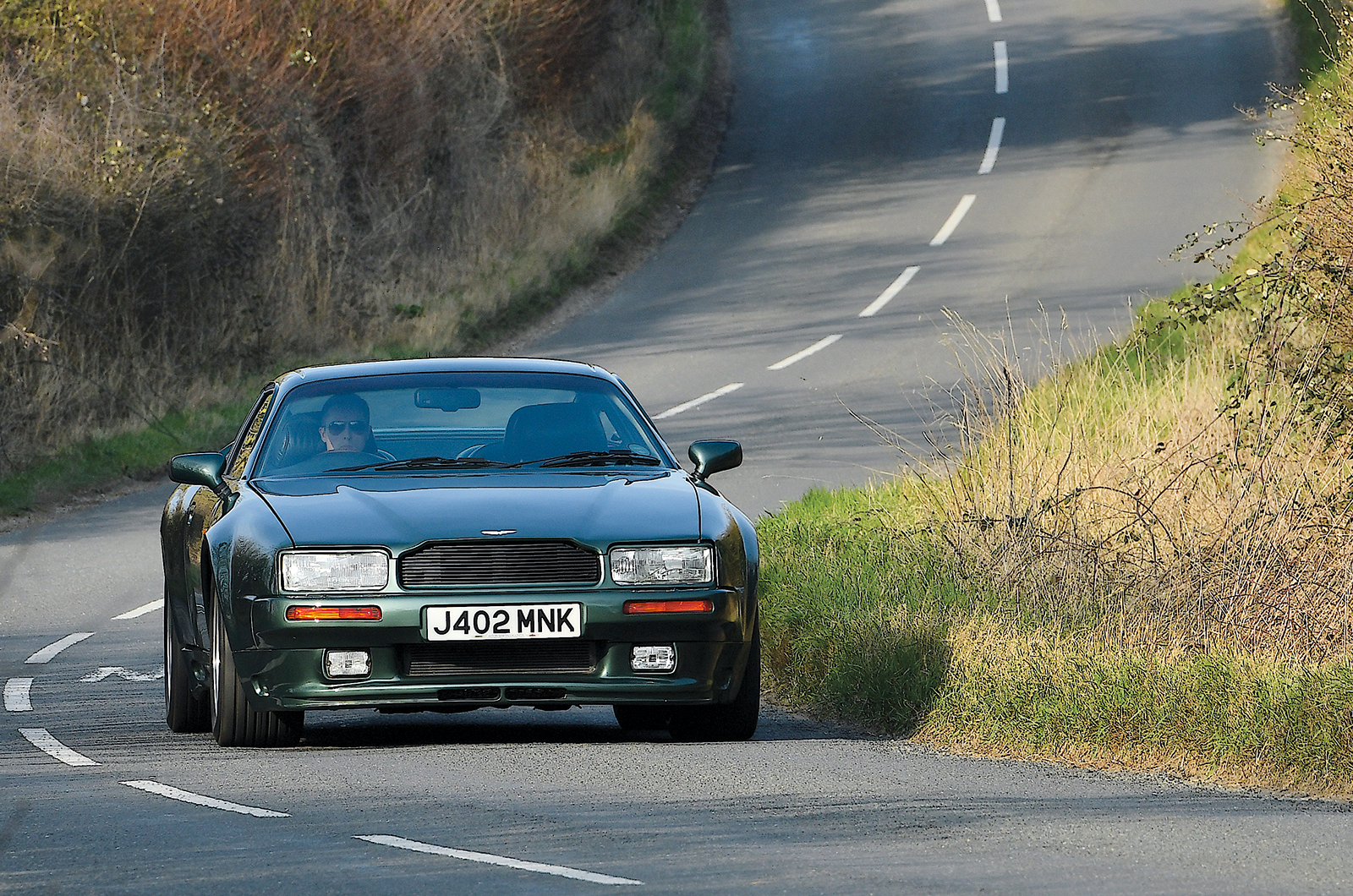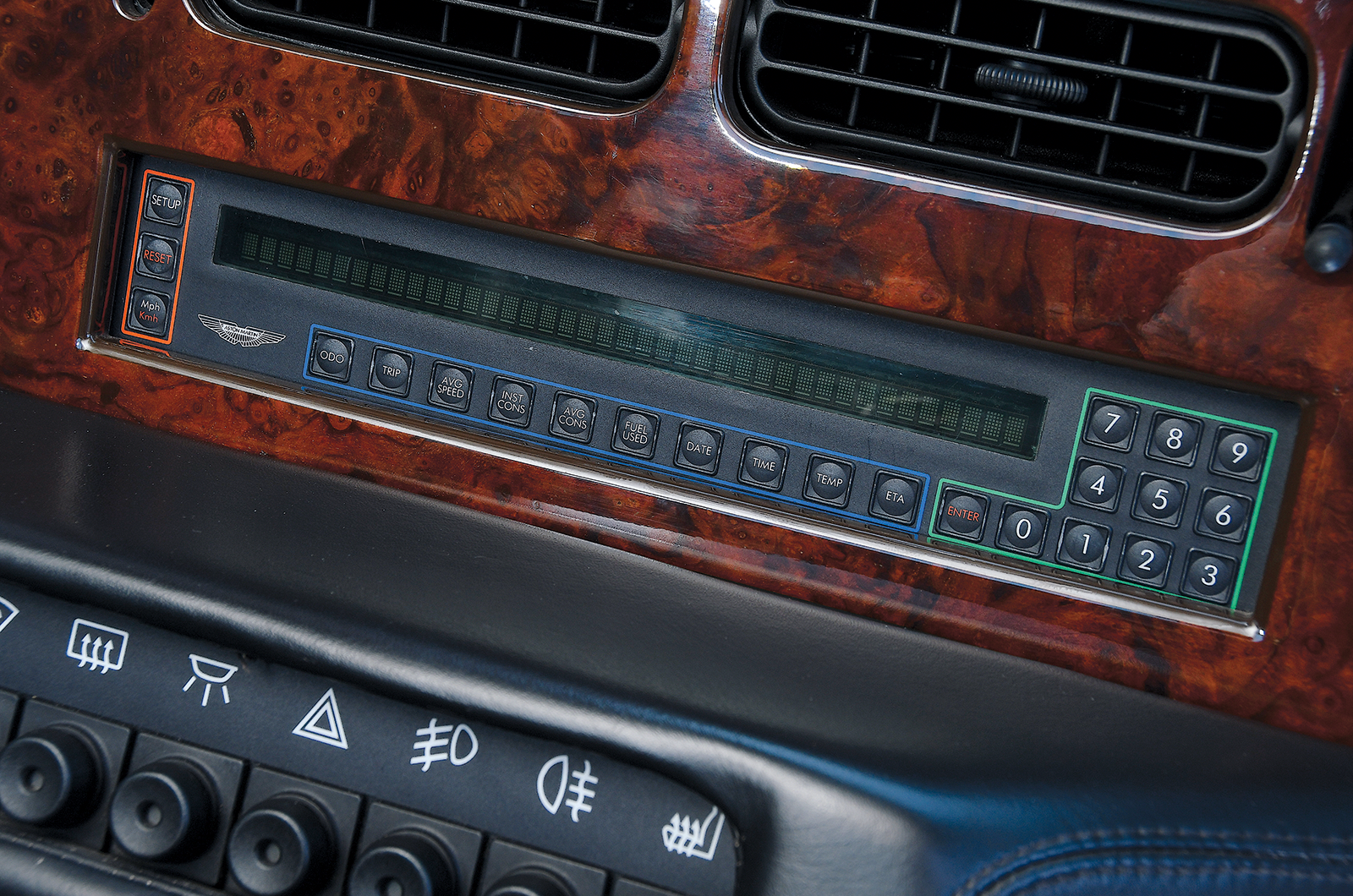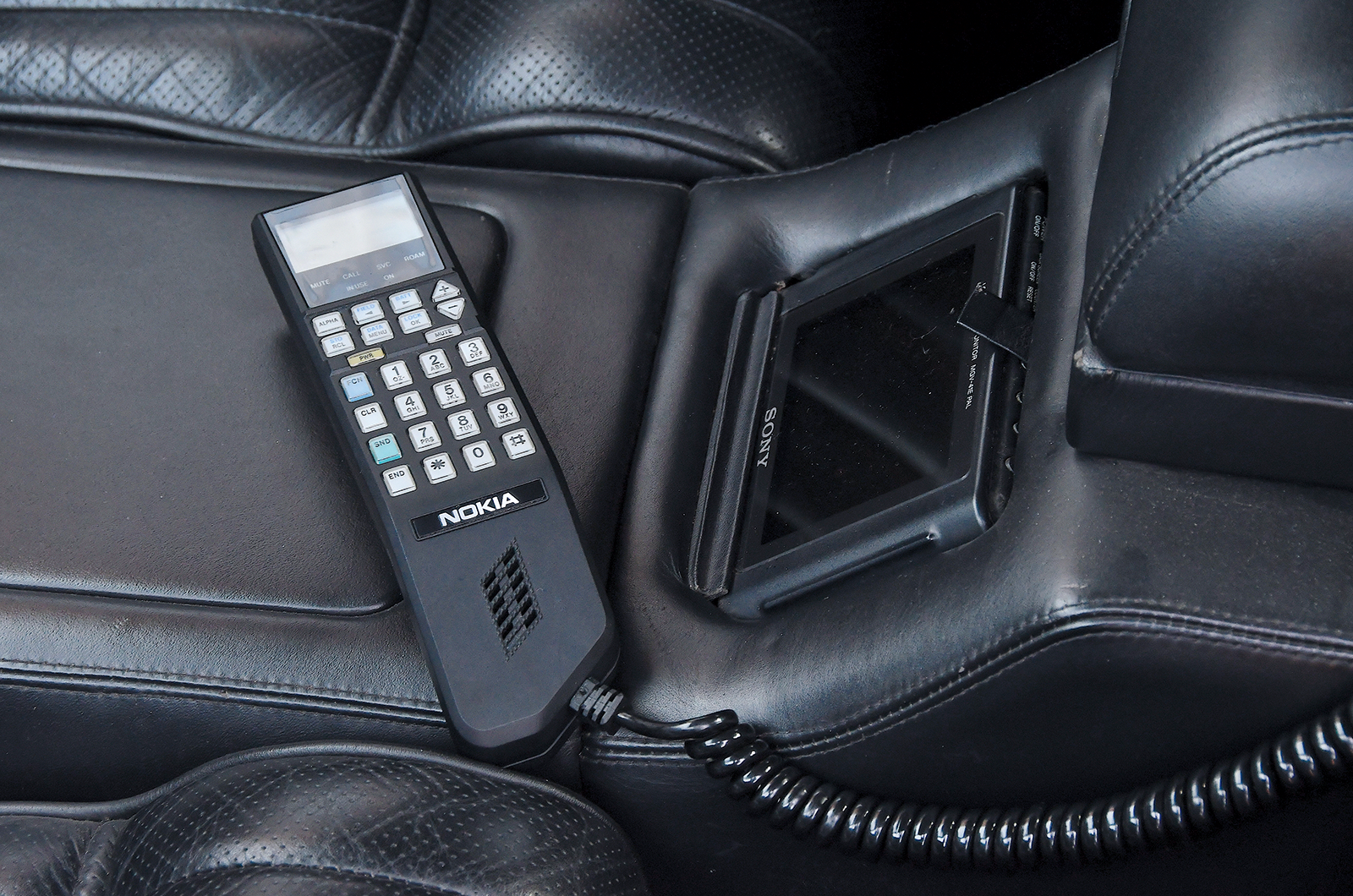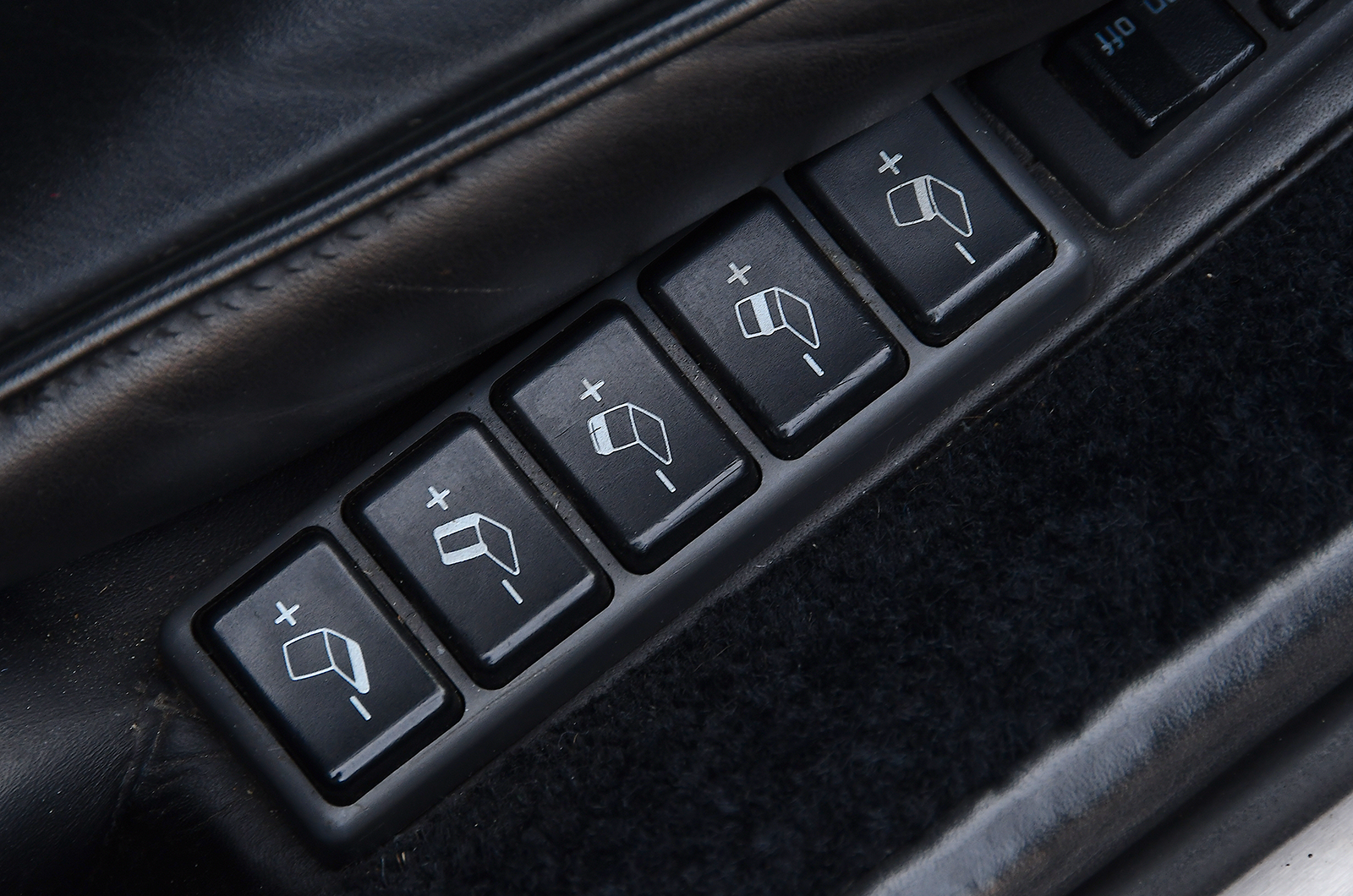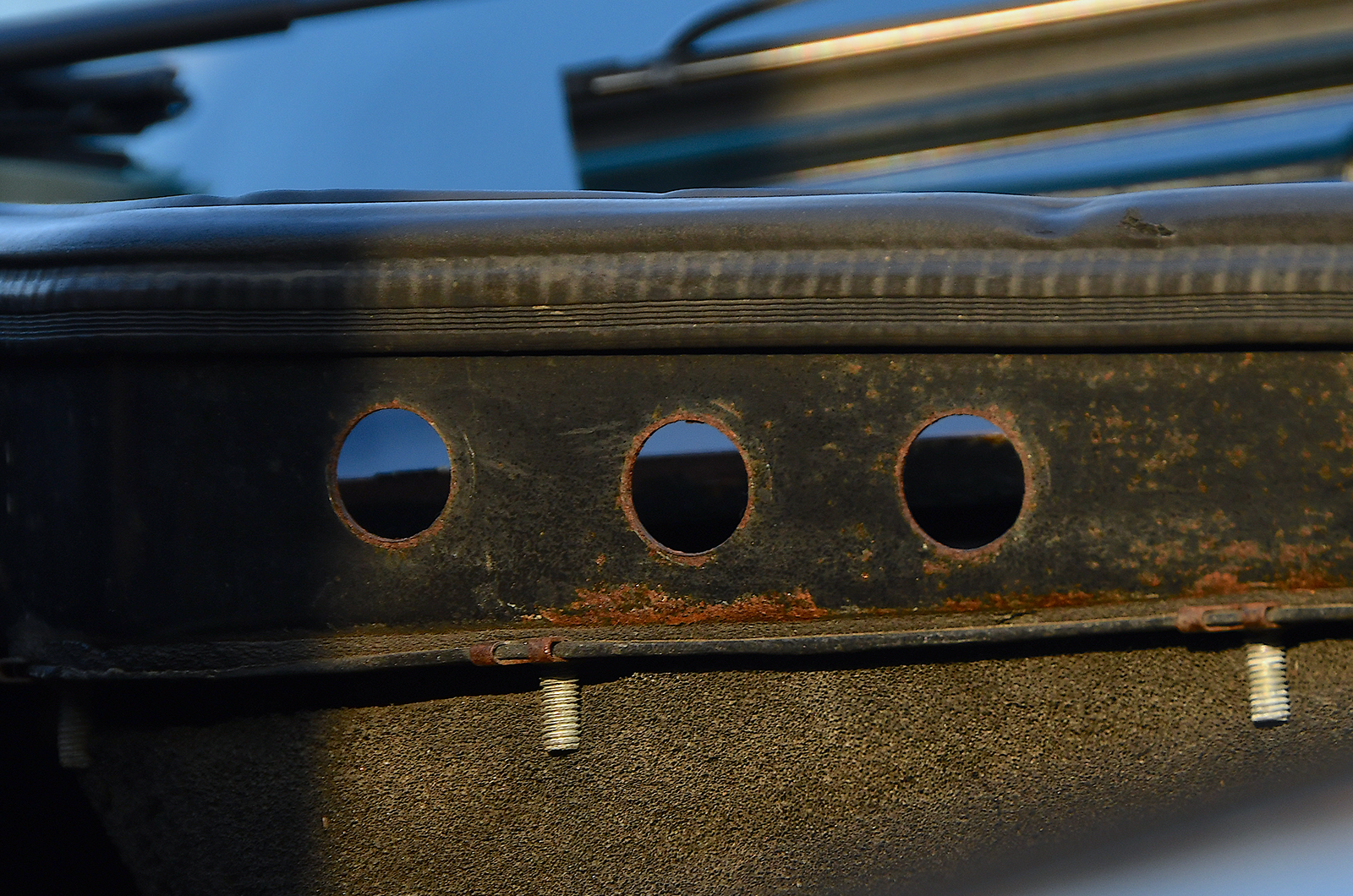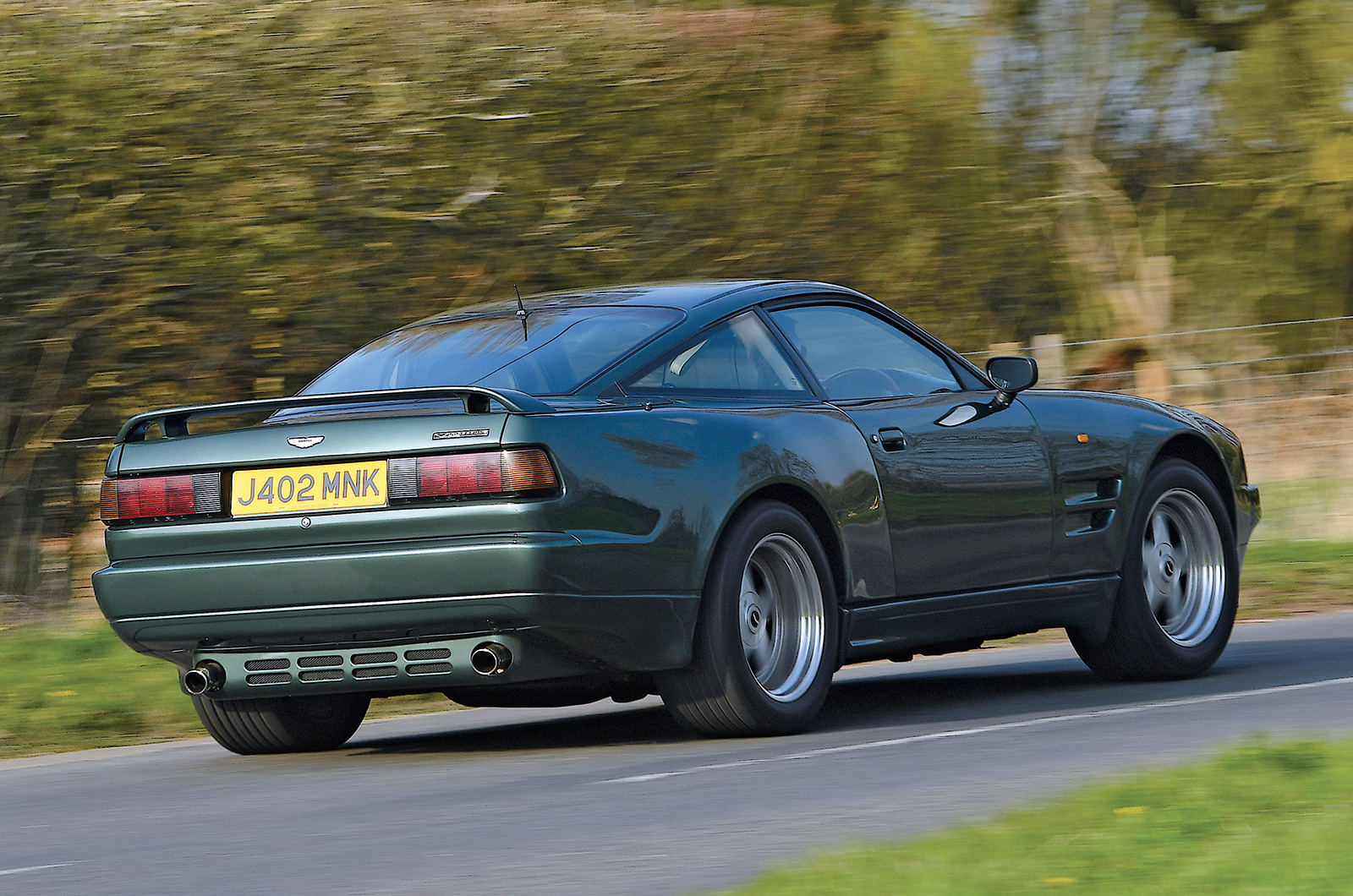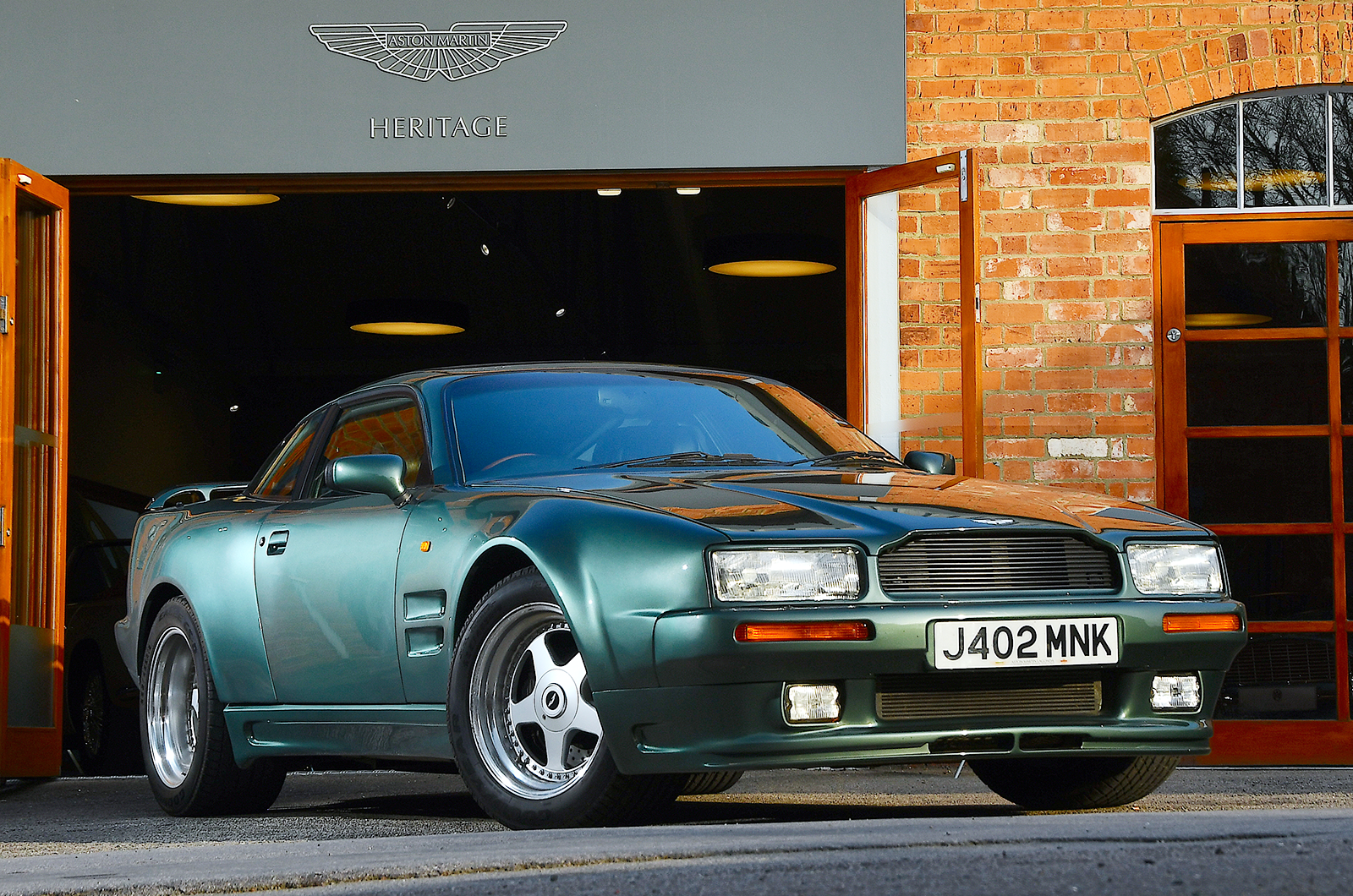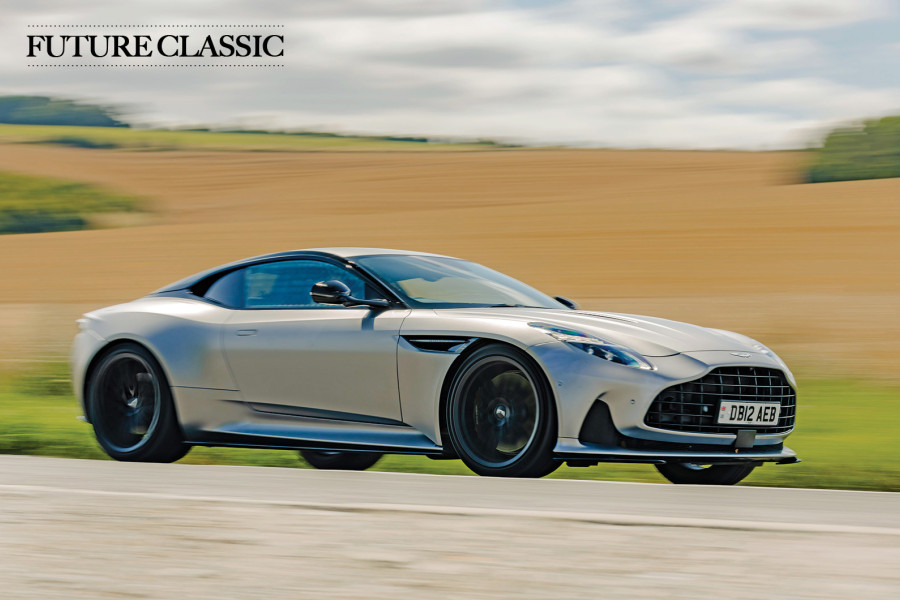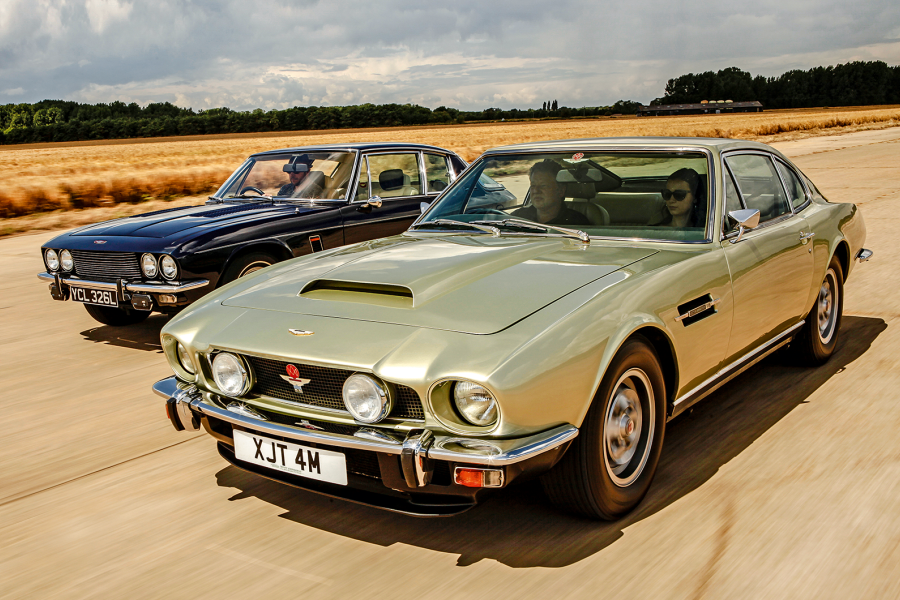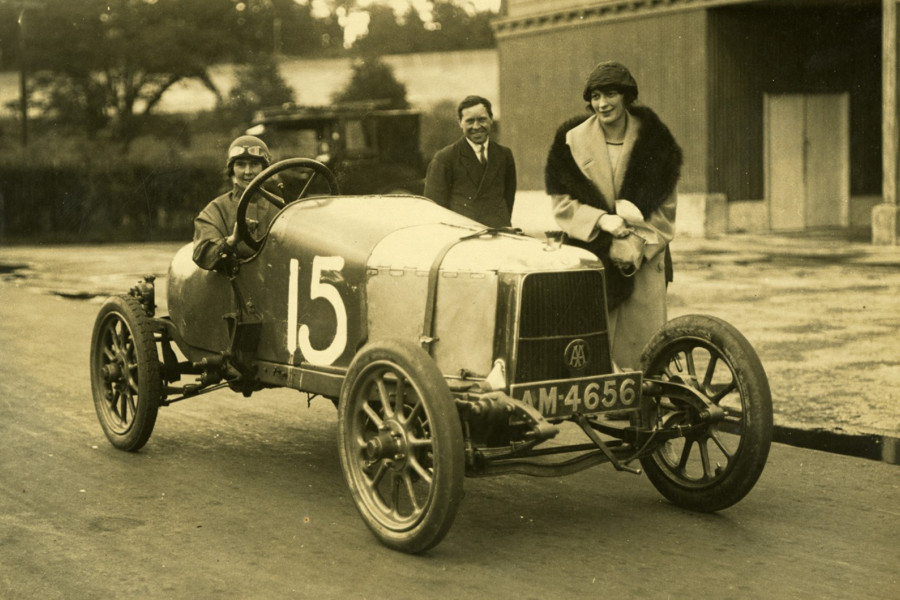It is easy to see how an automatic 5.3-litre Virage would be a gratifying Continental cruiser, with initial responses quickly dismissing comparisons with the Porsche 928 and Ferrari 512TR.
Have faith and dig deeper into the throttle, however, and the 6.3 rises out of its offbeat slumber into a thunderous charge.
The torque is huge and instant; it endows the Virage with the sort of raw urgency that visibly lifts the bonnet above the horizon.
In a third cog that nudges 120mph, there is more than enough in-gear flexibility to reel in most corners that fall into view; autobahners can take fourth and follow the curvature of the earth.
There’s plenty of switchgear in the Aston Martin’s cabin
There is an inevitably long-striding attitude to how the Virage turns its 102.8in wheelbase, and a degree of lean to be expected of a car that rides so softly despite its beefed-up anti-roll bars.
But there is remarkable balance, almost agility, with the obstructive weight in the steering falling away with speed to be just sharp enough to match its willingness to change direction, and the finely weighted throttle delivering sensational response.
It is all, really, about that engine.
It pulls with seemingly limitless leverage in any gear, with a deep-chested bellow behind a soaring momentum that roars all the way to a 6500rpm cutout.
Keeping the Aston Martin Virage 6.3’s engine cool was an issue; engineers even drilled holes into the scuttle
Dramatic and tirelessly luxuriant, it is the epicentre of this car’s appeal; enough almost to forgive its interior compromises and dubious rationale as a supercar or GT.
The DB7 was easier to understand, and so was the Vanquish – the last Aston to be built at Newport Pagnell.
Today’s range aligns better than ever with markets that you can find on a graph and, more importantly, make profits with (although at Aston that still seems to be a challenge).
The Aston Martin Virage 6.3 has a soft set-up, which allows for some body roll
Yet the particular charm of the 6.3-litre Virage is found not on a graph but somewhere on Goodwood’s Lavant Straight, on the end of a phone or at lunch with an old customer, over British B-roads or on the autobahn, and in the talents still fostered by what is now Aston Martin Works in Newport Pagnell.
It is the product of those people who desperately wanted to continue making cars, and those who were just as enthusiastic as patrons to keep them being built.
Images: John Bradshaw
Thanks to: Aston Martin Works
Aston Martin Virage: in all shapes and sizes
Aston Martin Virage shooting brakes provided extra practicality © Aston Martin
Apparently keen to explore every niche of Aston Martin ownership, the Customer Service department built a number of unusual versions of the Virage.
A series of shooting brakes continued a marque trope, but now built in-house at Newport Pagnell.
It’s thought five three-doors were made from 1992, with another five or so five-door ‘Virage Lagonda’ wagons (above) in ’94 on a range of longer wheelbases.
A final two V8 ‘Sportsman’ three-doors were made a few years later.
A limited number of Aston Martin Virage saloons were built © Aston Martin
There were four-door saloons, too, beginning with the 1994 Virage Lagonda 6.3 to match the five-door shooting brake, of which nine were made, including two with a longer 120.8in wheelbase.
In 1996, a new set of supercharged saloons was made, three of them wearing bespoke styling featuring rounded shoulderlines and a tapering boot (above).
These rare Aston Martin Virage coupés are curvier than the production model © Aston Martin
A brace of slinky coupé designs continued the adventurism, one with echoes of the DB4GT Zagato (above) and the other looking like a less aggressive, smoothed-over Virage facelift; three of each were built.
Pininfarina was even called in for a couple of designs, with one looking like a scaled-up DB7, but the very few cars built have never been seen in public.
Factfile
Aston Martin Virage 6.3
- Sold/number built 1992-’93/c60
- Construction box-section steel chassis, aluminium body
- Engine all-alloy, dohc-per-bank, 32-valve 6347cc V8, Weber-Alpha fuel injection
- Max power 500bhp @ 6000rpm
- Max torque 480lb ft @ 5800rpm
- Transmission five-speed manual, RWD via limited-slip differential
- Suspension independent, at front by wishbones rear A-frame, de Dion tube, radius arms, Watt linkage; coil springs, telescopic dampers, anti-roll bar f/r
- Steering power-assisted recirculating ball
- Brakes vented, cross-drilled discs, with servo and ABS
- Length 15ft 6½in (4737mm)
- Width 6ft 1in (1854mm)
- Height 4ft 4in (1321mm)
- Wheelbase 8ft 6¾in (2610mm)
- Weight 4341lb (1969kg)
- 0-60mph 5.1 secs
- Top speed 174mph
- Mpg 15
- Price new £200,000
- Price now £120,000*
*Price correct at date of original publication
Enjoy more of the world’s best classic car content every month when you subscribe to C&SC – get our latest deals here
READ MORE
20 oddball Aston Martins
Advantage Aston Martin: driving the V8 Vantage
Buyer’s guide: Aston Martin DB7
Aaron McKay
Aaron is Classic & Sports Car’s Deputy Editor
